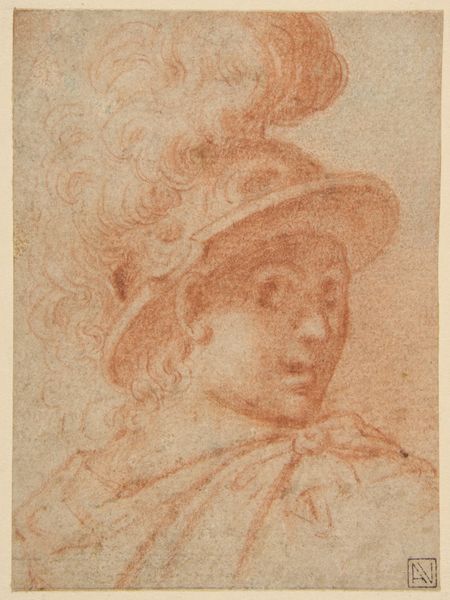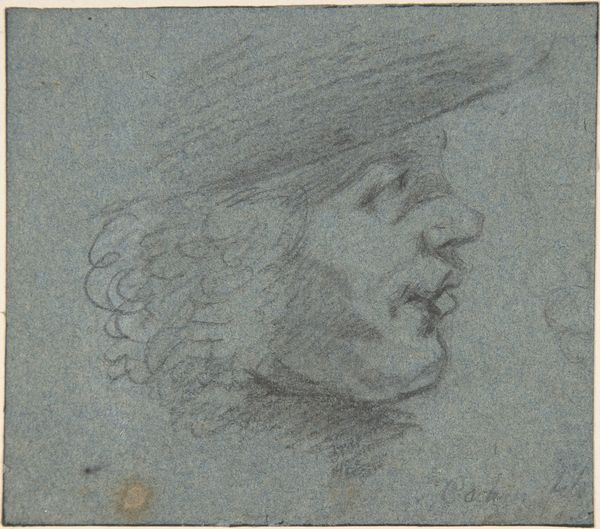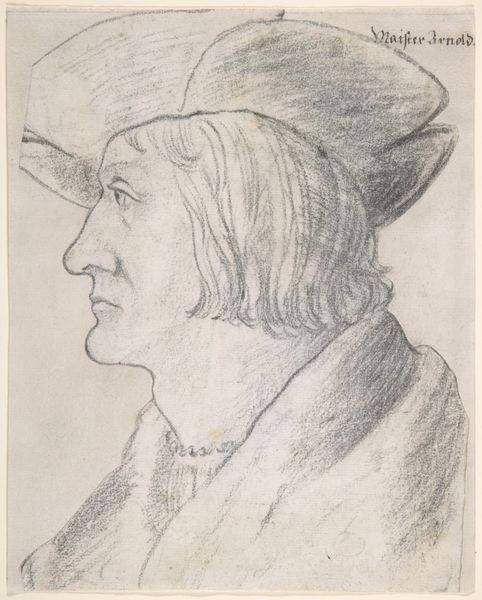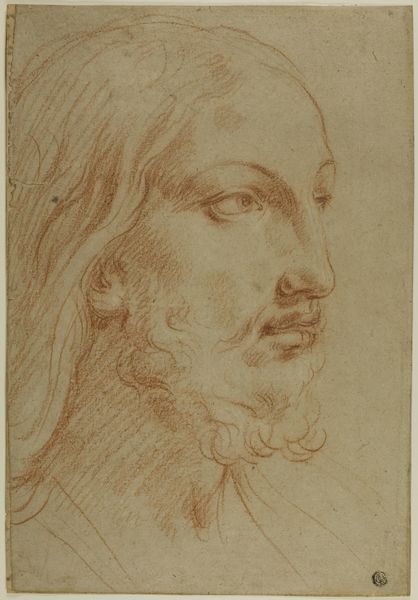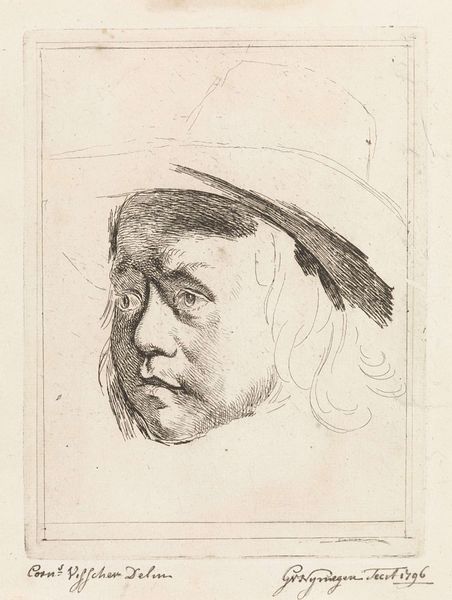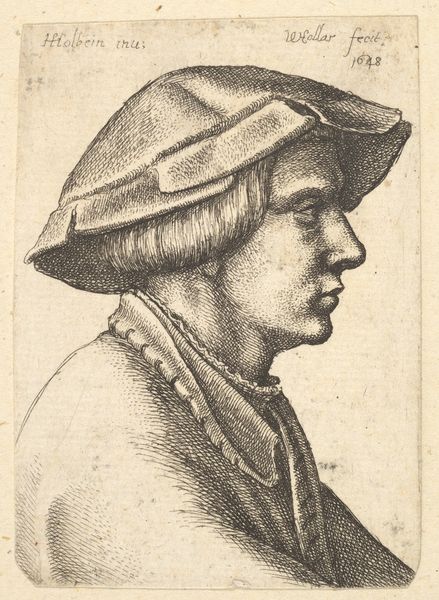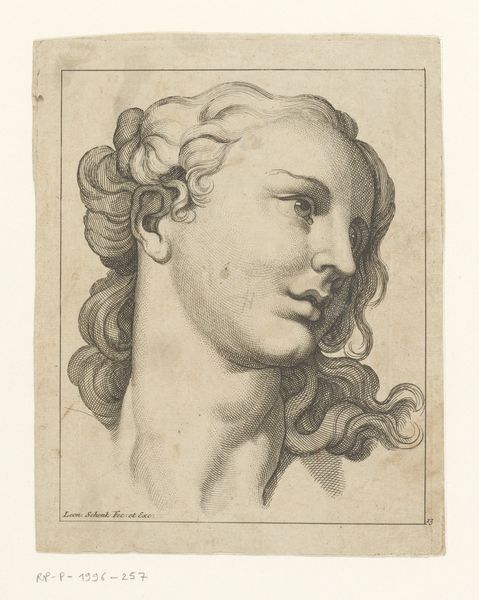
drawing, pencil
#
portrait
#
pencil drawn
#
drawing
#
toned paper
#
facial expression drawing
#
light pencil work
#
pencil sketch
#
portrait reference
#
pencil drawing
#
pencil
#
animal drawing portrait
#
portrait drawing
#
pencil work
#
academic-art
#
realism
Dimensions: height 216 mm, width 200 mm
Copyright: Rijks Museum: Open Domain
Curator: This is Isaac Walraven’s "Studie van een manshoofd, driekwart, naar links", or "Study of a man's head, three-quarters, to the left." It's difficult to place the work precisely, but it’s believed to be from between 1696 and 1765. Editor: Immediately, I’m struck by the intense gaze and the red chalk medium. It creates such a warm yet forceful impression, especially given that it's rendered with what seems like almost economical means. The way the paper itself almost glows under the shading adds an important visual dimension to the composition, a depth, a real sensuality. Curator: That's interesting. I’d focus more on its function within the artistic practice of the time. Head studies like this served as crucial references within the academic art system. Artists would keep collections to refer back to; this relates to pedagogical method where repetition and mastery of form were emphasized, think the academies which proliferated throughout Europe. Editor: Absolutely. But, to understand that system fully, shouldn’t we also be considering what makes the material of red chalk particularly prized and also affordable? The labor involved in sourcing it, grinding it… These aren't neutral materials. This drawing tells us as much about how artists saw as it does how artists made. Curator: Certainly, the availability of materials shapes artistic creation, though its academic associations often dictated patronage too. Think of wealthy merchants sponsoring art education or purchasing drawing for their collections - it suggests a broader societal appreciation of art and scholarship that reinforces class structures. Editor: Agreed. This image, at first glance, looks to be a fleeting sketch, almost intimate, of a private moment and direct, unburdened from grand societal ambition, which is somewhat contradicted, considering its purpose in an institution. It raises great questions about intention versus function doesn't it? Curator: Indeed. It reflects art's function in solidifying particular ideals but seen through this study's raw depiction, that raises many thought-provoking paradoxes in itself, about art production then and now. Editor: I see this work anew, no longer simply a portrait study, but an intimate glance behind the workshop walls.
Comments
No comments
Be the first to comment and join the conversation on the ultimate creative platform.
